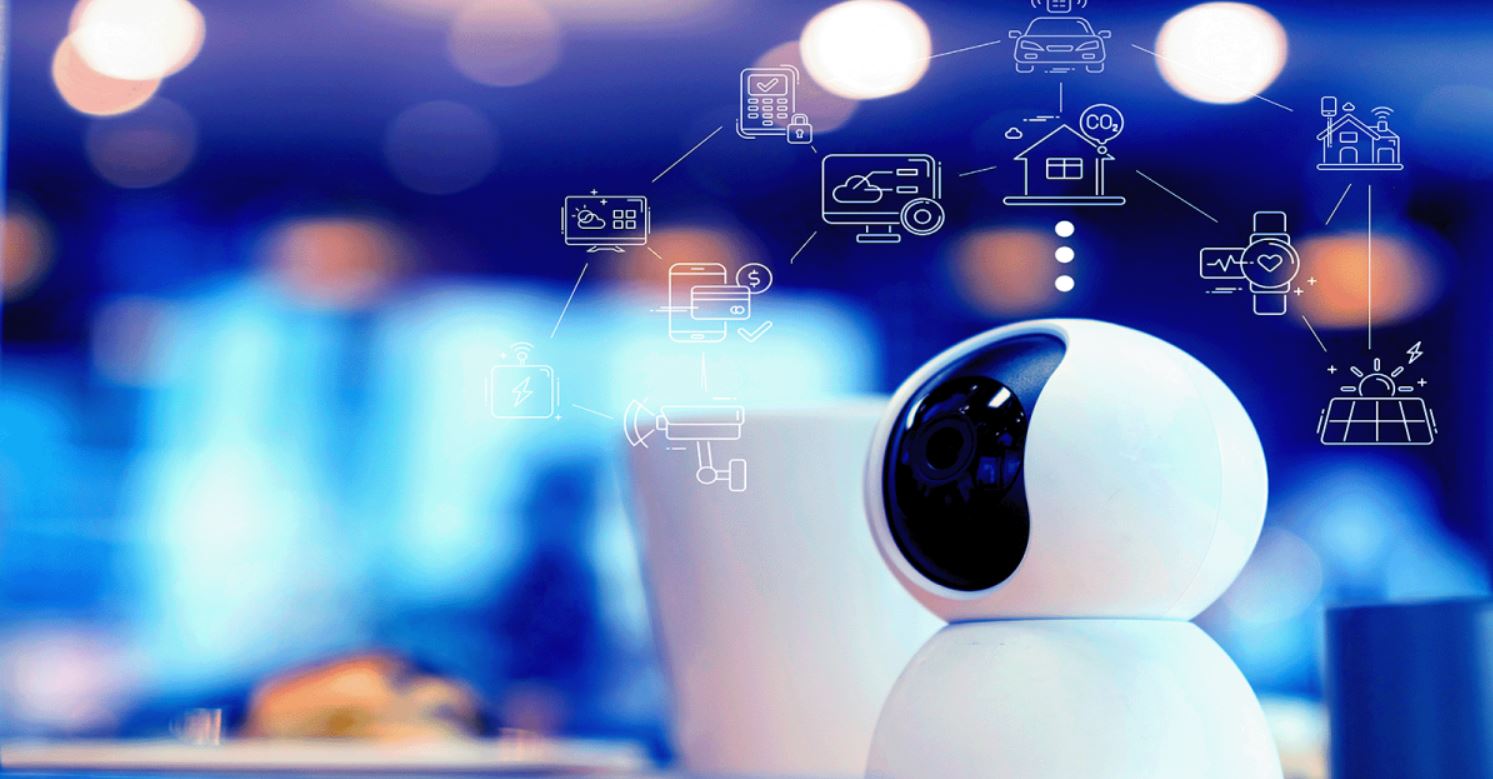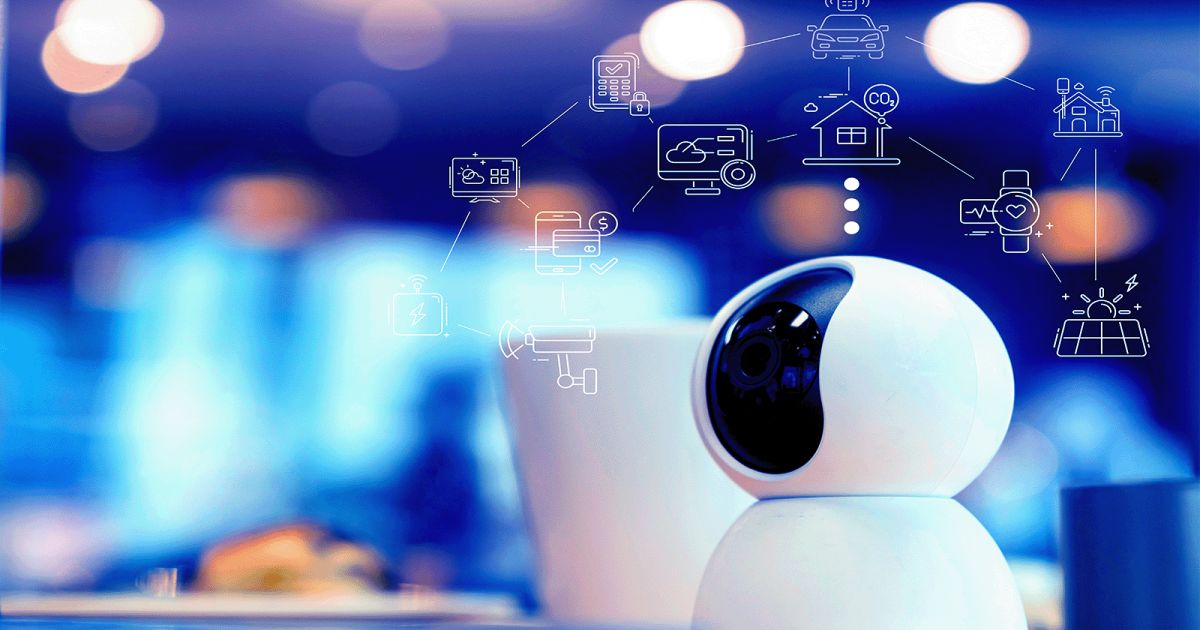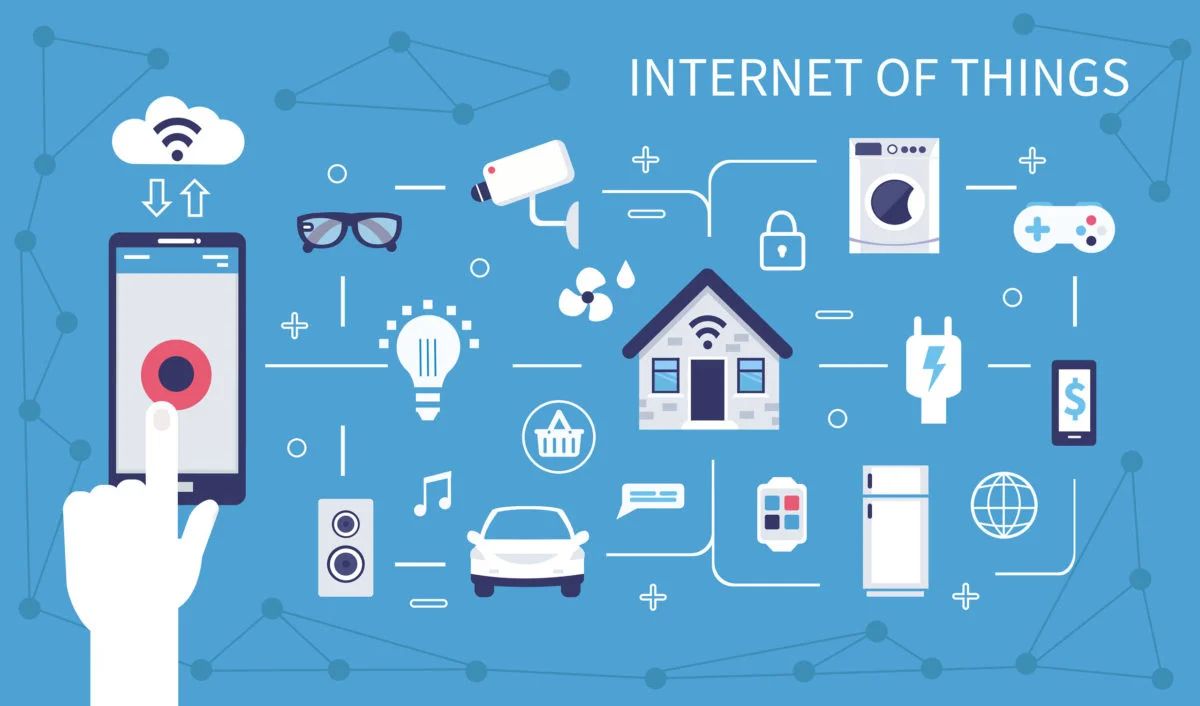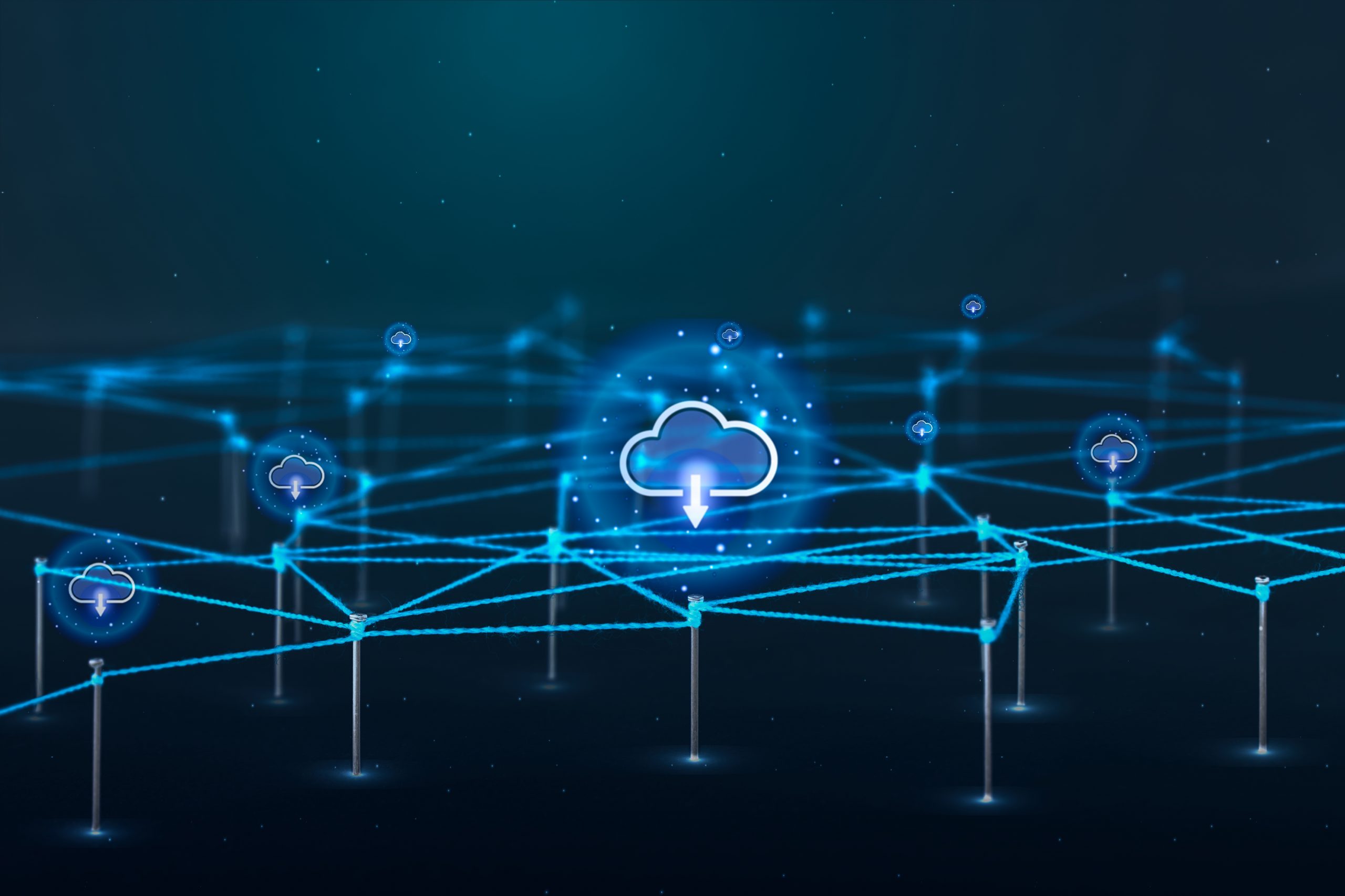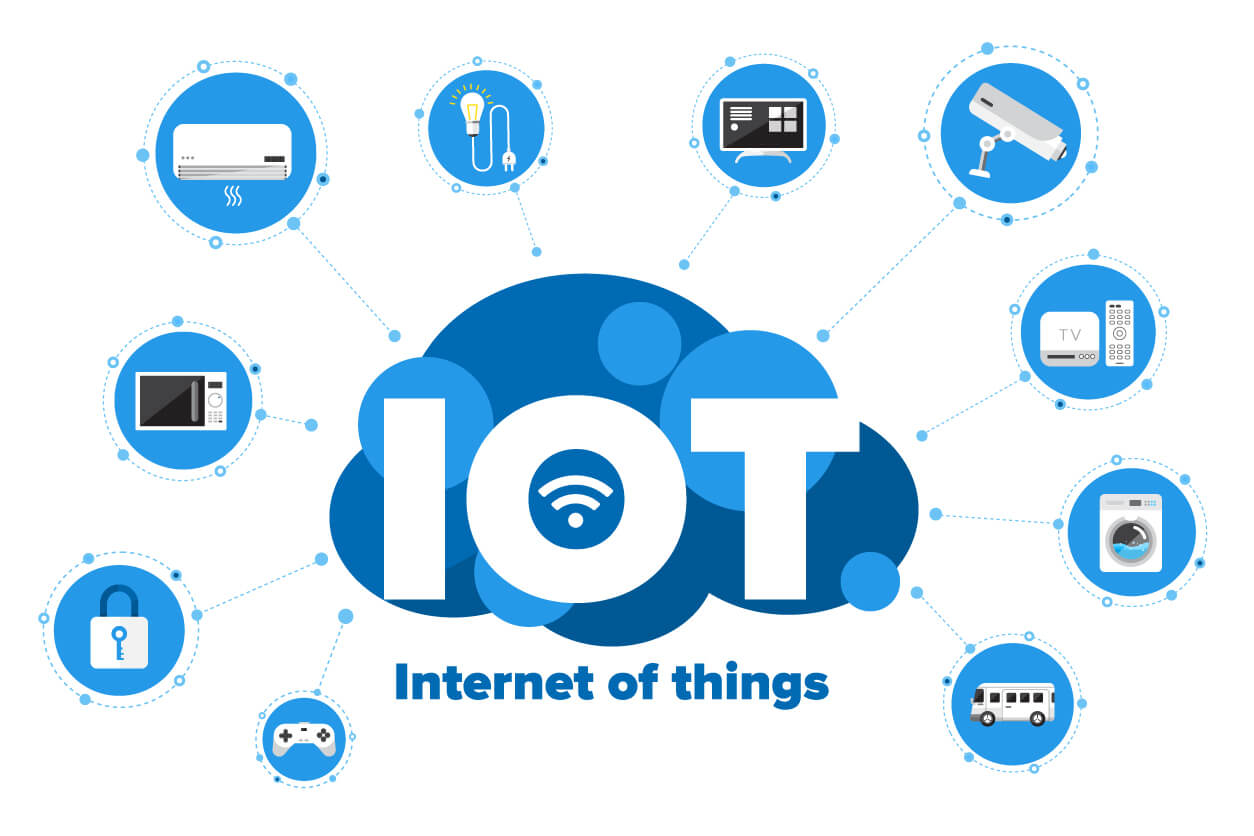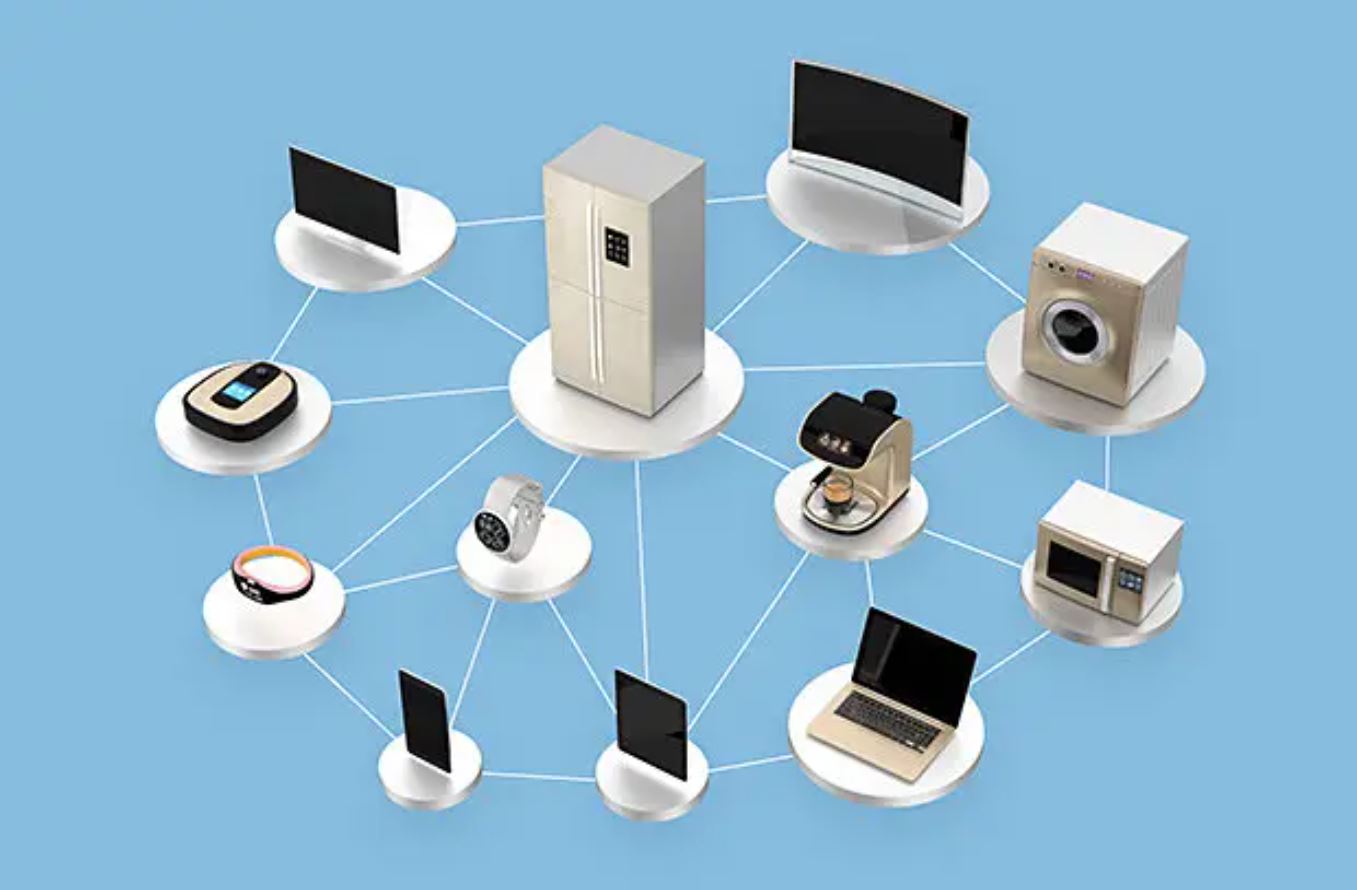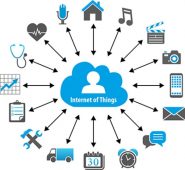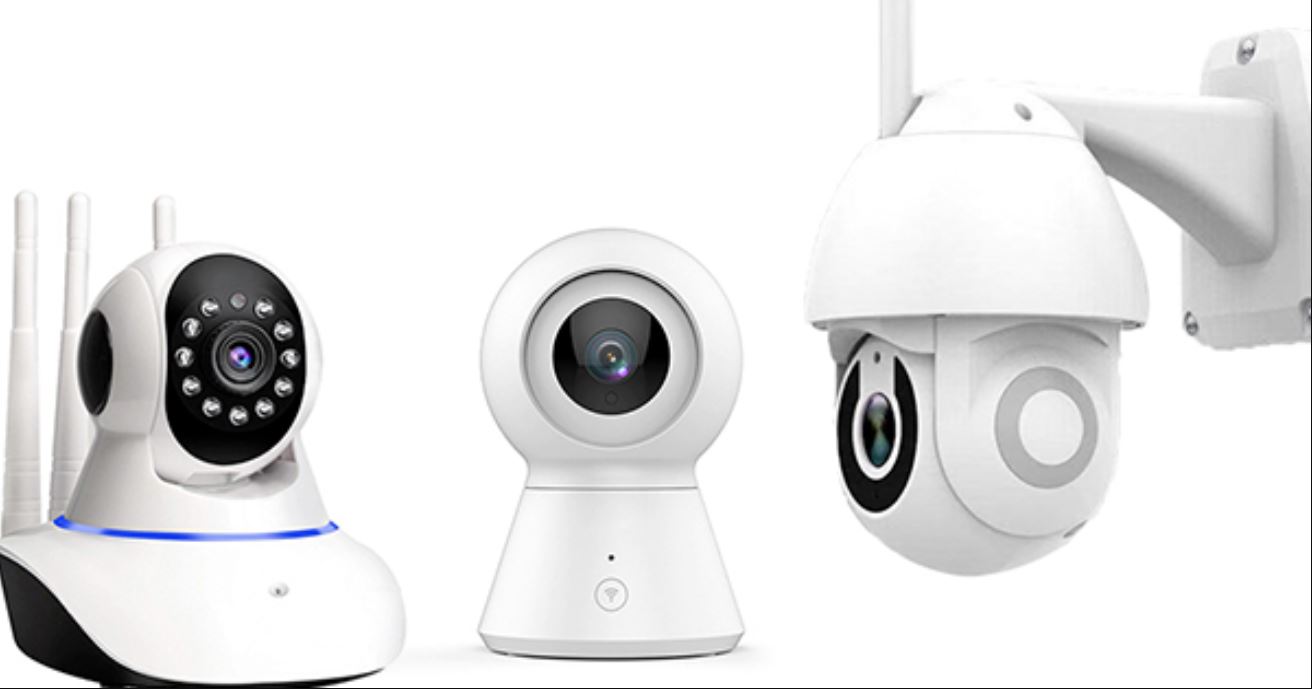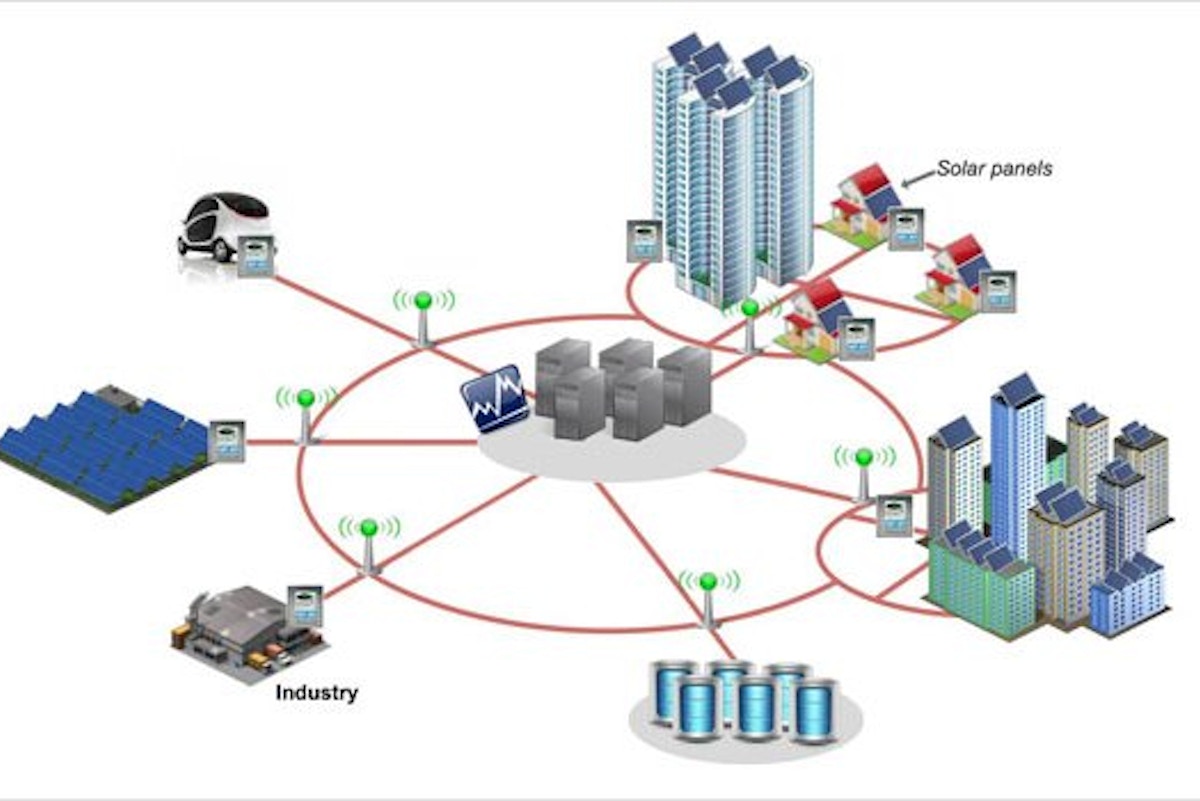Introduction
The internet of things (IoT) is revolutionizing the way we live and work. With billions of devices connected, seamlessly exchanging data over the internet, it has transformed various industries and everyday activities. At the heart of the IoT ecosystem are sensors, which play a crucial role in gathering and transmitting real-time data.
An IoT sensor is a device that detects and measures physical or environmental conditions such as temperature, humidity, light, motion, or pressure. These sensors are equipped with the ability to capture and transmit data wirelessly to other devices or a central system. By providing valuable insights into the physical world, IoT sensors enable businesses and individuals to make informed decisions, automate processes, and improve efficiency.
The functionality of an IoT sensor relies on a combination of hardware, software, and connectivity capabilities. These sensors are typically embedded within objects or environments, making them unobtrusive and seamlessly integrated into our surroundings. The constant stream of data generated by these sensors allows for real-time monitoring, analysis, and control, leading to proactive decision-making and enhanced responsiveness.
IoT sensors come in various shapes and sizes, each designed for specific applications and use cases. They can be found in diverse industries such as healthcare, manufacturing, agriculture, transportation, and smart homes. From wearable fitness trackers that monitor heart rate and steps taken, to industrial sensors that detect machine vibrations and temperature fluctuations, IoT sensors are everywhere.
The widespread adoption of IoT sensors has brought forth numerous advantages. Businesses can optimize operations, reduce costs, and streamline processes by leveraging the power of real-time data. Individuals can improve their quality of life through personalized healthcare devices and smart home automation. However, along with these benefits, IoT sensor implementation also brings challenges such as data privacy, security, interoperability, and scalability.
In this article, we will explore in detail what IoT sensors are, how they work, the different types available, their applications across various industries, their advantages, and the challenges that come with them. By understanding the role and capabilities of IoT sensors, we can truly appreciate the impact they have in shaping our connected world.
What is IoT Sensor?
An IoT sensor is a device that detects and measures physical or environmental conditions such as temperature, humidity, light, motion, or pressure. These sensors are a crucial component of the Internet of Things (IoT) ecosystem, as they enable the capture and transmission of real-time data wirelessly. By collecting data from the physical world and converting it into a digital format, IoT sensors provide valuable insights that can be used to make informed decisions, automate processes, and improve efficiency.
IoT sensors are designed to be compact, unobtrusive, and easily integrated into various objects or environments. They are equipped with different types of sensors, depending on the specific data they are intended to capture. For example, a temperature sensor measures the ambient temperature, while a light sensor detects the intensity of light in an area.
These sensors work by continuously monitoring the environment and capturing data at regular intervals. The captured data is then processed and transmitted wirelessly to other devices or a central system through technologies like Wi-Fi, Bluetooth, or cellular networks. The data can be sent in real-time or stored locally for later retrieval.
IoT sensors are capable of capturing a wide range of data, depending on their purpose and application. For instance, in agriculture, soil moisture sensors can help farmers optimize irrigation schedules by providing accurate data about the soil’s water content. In industrial settings, sensors can detect machine vibrations to prevent equipment failure and ensure smooth operations. In healthcare, wearable fitness trackers use sensors to monitor heart rate and sleep patterns, assisting individuals in managing their health and wellness.
The data collected by IoT sensors is invaluable for businesses, enabling them to gain insights into their operations, optimize efficiency, and automate processes. By monitoring and analyzing real-time data, companies can identify patterns, detect anomalies, and make data-driven decisions.
Overall, IoT sensors are the bridge between the physical and digital worlds. They enable the integration of the physical environment into the digital realm, unlocking numerous opportunities for innovation and improvement. Whether it’s monitoring environmental conditions, tracking inventory, or enabling smart home automation, IoT sensors are at the core of the IoT revolution, shaping how we interact with the world around us.
How does an IoT Sensor work?
IoT sensors are designed to capture data from the physical world and convert it into digital information that can be transmitted over the internet. The process involves three main components: the sensor itself, the microcontroller or processor, and the connectivity module.
The sensor is responsible for detecting and measuring the physical or environmental conditions, such as temperature, humidity, or light. It converts these physical signals into electrical signals, which can be interpreted and processed by the microcontroller or processor.
The microcontroller or processor is the brain of the IoT sensor. It receives the electrical signals from the sensor and processes the data to make it ready for transmission. This may involve tasks such as filtering out noise, calibrating the data, or performing calculations based on the sensor’s specifications.
Once the data is processed, the connectivity module comes into play. This module allows the IoT sensor to communicate wirelessly with other devices or a central system over networks such as Wi-Fi, Bluetooth, or cellular networks. The data can be transmitted in real-time or stored locally for later transmission.
When it comes to transmitting the data, IoT sensors have different options depending on the specific requirements and constraints. In some cases, the sensor may be connected directly to the internet, sending data to a cloud-based platform for further analysis and storage. In other cases, the sensor may communicate with a gateway device that collects and forwards the data to the internet.
Regardless of the transmission method, the data from the IoT sensor can be used for a variety of purposes. It can be analyzed in real-time to monitor and control processes, detect anomalies, or trigger automated actions. It can also be stored and combined with data from other sensors to gain deeper insights and perform advanced analytics.
It’s important to note that IoT sensors can operate independently or as part of a larger IoT network. In some cases, they may be deployed in a distributed manner, with many sensors working together to provide a comprehensive view of an environment or system. This enables organizations to collect data from multiple sources and gain a holistic understanding of their operations.
In summary, IoT sensors work by detecting and measuring physical or environmental conditions, converting these signals into digital data, and transmitting the data wirelessly to other devices or a central system. Their ability to capture real-time data from the physical world and enable seamless communication is what makes IoT systems so powerful and transformative.
Types of IoT Sensors
There is a wide range of IoT sensors available, each designed to capture specific types of data. These sensors vary in terms of their functionality, form factor, and the environmental conditions they are designed to monitor. Here are some of the most common types of IoT sensors:
- Temperature Sensors: These sensors measure and monitor temperature variations in the surrounding environment. They are widely used in industries such as healthcare, agriculture, and manufacturing, where temperature control is critical for maintaining product quality and process efficiency.
- Humidity Sensors: Humidity sensors detect and measure the amount of moisture in the air. They find applications in areas such as greenhouses, HVAC systems, and data centers, where maintaining appropriate humidity levels is important to prevent damage to equipment or ensure optimal conditions for plant growth.
- Light Sensors: Light or optical sensors measure the intensity of light in an area. They are commonly found in devices such as smart lighting systems, security cameras, and automatic brightness adjustment features in smartphones or monitors. Light sensors enable energy-efficient lighting solutions and enhance user comfort and convenience.
- Proximity Sensors: Proximity sensors detect the presence or absence of objects within a specific range. They are used in various applications, including automatic doors, touchless faucets, and object detection in robotics. Proximity sensors enable hands-free and intuitive interactions with devices and can improve safety and efficiency in industrial settings.
- Pressure Sensors: Pressure sensors measure and monitor changes in pressure in gases or liquids. They are utilized in applications such as tire pressure monitoring systems, industrial process monitoring, and medical devices like blood pressure monitors. Pressure sensors enable precise measurements and control, ensuring safety and accuracy.
- Motion Sensors: Motion sensors detect movement or changes in an object’s position. They are commonly found in security systems, automatic lighting systems, and gaming devices. Motion sensors enable energy-saving features, enhanced security, and immersive user experiences.
- Gas Sensors: Gas sensors detect the presence and measure the concentration of specific gases in the environment. They are used in industries such as healthcare, environmental monitoring, and manufacturing to ensure safety and compliance. Gas sensors can detect harmful gases, enabling timely action to prevent accidents or mitigate environmental risks.
These are just a few examples of the types of IoT sensors available. There are many more specialized sensors designed for specific applications, such as biometric sensors for healthcare, vibration sensors for predictive maintenance, and soil moisture sensors for agriculture.
It’s important to choose the right type of IoT sensor based on the desired data to be captured and the specific requirements of the application. Understanding the capabilities and limitations of different sensor types is crucial in building effective IoT solutions that deliver accurate and relevant data for analysis and decision-making.
Applications of IoT Sensors
IoT sensors have found applications across various industries, transforming the way we live, work, and interact with our environment. Here are some of the key areas where IoT sensors are making a significant impact:
- Smart Homes: IoT sensors are integral to creating smart homes, where devices and appliances are interconnected and can communicate with each other. Sensors enable automation and control of lighting, temperature, security systems, and energy management, providing convenience, comfort, and energy savings for homeowners.
- Industrial Automation: IoT sensors play a crucial role in industrial automation by monitoring and controlling operations. They enable predictive maintenance, real-time monitoring of machine performance, and optimization of manufacturing processes, leading to increased efficiency, reduced downtime, and improved productivity.
- Healthcare: IoT sensors are revolutionizing the healthcare industry by enabling remote patient monitoring, wearable health devices, and telemedicine applications. These sensors can monitor vital signs, track medication adherence, and provide valuable data for diagnosis and treatment decisions, improving patient outcomes and reducing healthcare costs.
- Agriculture: IoT sensors are used in smart agriculture to monitor soil moisture, temperature, humidity, and other environmental factors. This data helps farmers optimize irrigation, fertilizer usage, and crop protection, leading to higher yields, resource conservation, and sustainable farming practices.
- Transportation and Logistics: IoT sensors are employed in tracking and monitoring systems for vehicles, shipments, and supply chain management. GPS sensors enable real-time tracking of assets, temperature sensors ensure proper handling of perishable goods, and motion sensors detect tampering or unauthorized access, improving efficiency, security, and customer satisfaction.
- Environmental Monitoring: IoT sensors are deployed to monitor air quality, water quality, and weather conditions. These sensors provide real-time data for pollution control, flood detection, and early warning systems. Environmental monitoring using IoT sensors helps in safeguarding ecosystems, public health, and supporting sustainable development.
These are just a few examples of how IoT sensors are being utilized in various industries. The versatility and flexibility of IoT sensors lend themselves to countless applications, from smart cities and energy management to retail and asset tracking.
The data collected by IoT sensors in these applications enables businesses and individuals to make informed decisions, automate processes, improve efficiency, and enhance overall quality of life. With the proliferation of IoT technology, the possibilities for innovative applications of IoT sensors continue to expand, bringing about a truly connected world.
Advantages of IoT Sensors
The widespread adoption of IoT sensors is driven by the numerous advantages they offer in various domains. Here are some of the key benefits of using IoT sensors:
- Real-Time Data: IoT sensors provide real-time data that can be accessed and analyzed immediately. This enables proactive decision-making, as businesses and individuals can respond quickly to changes or anomalies in the environment.
- Efficiency and Automation: IoT sensors automate tasks and processes, eliminating the need for manual intervention. This leads to increased operational efficiency, reduced human error, and cost savings.
- Improved Accuracy: IoT sensors deliver accurate and reliable data, eliminating guesswork and providing precise measurements. This ensures more informed decisions and better overall performance.
- Cost Savings: IoT sensors enable predictive maintenance, preventing costly breakdowns and optimizing maintenance schedules. They also support energy management, helping reduce energy consumption and associated costs.
- Enhanced Safety and Security: IoT sensors can detect potential hazards or security breaches, allowing for immediate action. This ensures the safety of individuals, assets, and the environment.
- Increased Productivity: With real-time data insights, businesses can identify bottlenecks, streamline processes, and optimize resource allocation. This leads to improved productivity and better utilization of resources.
- Data-Driven Insights: IoT sensors generate a massive amount of data that can be analyzed to gain valuable insights. Businesses can identify trends, patterns, and correlations, leading to better understanding and strategic decision-making.
- Remote Monitoring and Control: IoT sensors enable remote monitoring and control of devices, systems, and environments. This allows businesses and individuals to oversee operations from anywhere, improving convenience and flexibility.
- Customization and Personalization: IoT sensors can be tailored to specific needs and preferences. Whether it’s adjusting lighting levels in a smart home or monitoring specific parameters in an industrial setting, IoT sensors offer customized solutions.
- Sustainability: IoT sensors support sustainable practices by optimizing energy usage, resource allocation, and waste management. They enable smart grids, efficient transportation systems, and environmentally friendly processes.
These advantages highlight the transformative potential of IoT sensors across various industries, from improving healthcare outcomes and optimizing manufacturing processes to enhancing everyday living experiences and enabling sustainable practices.
However, it’s important to address the challenges and considerations associated with IoT sensors, such as data privacy, security vulnerabilities, interoperability, and the need for reliable connectivity. Overcoming these challenges will ensure the seamless integration and full realization of the benefits that IoT sensors offer.
Challenges with IoT Sensors
While IoT sensors offer numerous advantages, their widespread adoption also brings certain challenges that need to be addressed. Here are some of the key challenges associated with IoT sensors:
- Data Privacy and Security: IoT sensors collect and transmit sensitive data, making data privacy and security a critical concern. Safeguarding data from unauthorized access or breaches is essential to protect individuals’ privacy and maintain the integrity of systems.
- Interoperability: IoT sensors come from different manufacturers and may use different communication protocols, making interoperability a challenge. Ensuring seamless integration and communication between devices from various vendors is crucial for the smooth functioning of IoT networks.
- Reliable Connectivity: IoT sensors rely on stable and reliable connectivity to transmit data. However, issues such as network outages, signal interference, or limited coverage areas can disrupt data transmission and impact the effectiveness of IoT systems.
- Power Management: Many IoT sensors operate on battery power, and managing power consumption is essential for their long-term use. Balancing the need for continuous data collection with power efficiency poses a challenge in designing and deploying IoT sensor networks.
- Scalability: As the number of IoT sensors increases, managing and scaling the infrastructure becomes more complex. Ensuring that the network can handle a large volume of data, devices, and interactions is a challenge that needs to be addressed for seamless expansion.
- Data Overload and Analysis: IoT sensors generate a vast amount of data, which can lead to data overload. Effectively analyzing and extracting meaningful insights from this data requires advanced analytics tools and techniques.
- Cost: The cost of deploying and maintaining IoT sensor networks can be significant, particularly for large-scale implementations. Initial investment, ongoing maintenance, and data storage costs need to be evaluated against the expected benefits of the IoT system.
- Ethical and Legal Considerations: The use of IoT sensors raises ethical and legal concerns, especially regarding data ownership, consent, and potential misuse. Establishing clear guidelines and regulations is crucial to ensure responsible and ethical use of IoT sensor data.
Addressing these challenges requires collaboration between stakeholders, including technology providers, policymakers, and organizations that deploy IoT systems. Developing robust security measures, ensuring interoperability standards, improving connectivity infrastructure, and advancing data analytics capabilities are all essential steps toward harnessing the full potential of IoT sensors.
By actively addressing these challenges, businesses and individuals can maximize the benefits of IoT sensors while mitigating the associated risks, ultimately fostering a more secure, efficient, and connected future.
Conclusion
The rise of IoT sensors has transformed the way we interact with the world around us. These devices play a vital role in the Internet of Things ecosystem, capturing real-time data from the physical world and enabling connectivity and automation. IoT sensors have found applications in industries ranging from healthcare and agriculture to manufacturing and transportation, revolutionizing processes and improving efficiency.
Through their ability to provide real-time data, IoT sensors empower businesses and individuals to make informed decisions, optimize operations, and enhance productivity. The advantages of IoT sensors include real-time data insights, increased efficiency, improved accuracy, cost savings, enhanced safety, and personalized experiences.
However, the implementation of IoT sensors also brings challenges that need to be addressed. Data privacy and security, interoperability, reliable connectivity, power management, scalability, data overload, cost, and ethical considerations are among the challenges that organizations and policymakers must navigate to fully leverage the potential of IoT sensors.
Despite these challenges, the potential impact of IoT sensors is immense. As technology continues to advance, and efforts to address the challenges mature, IoT sensors will become even more integral to our daily lives. From smart homes and industrial automation to healthcare monitoring and environmental sustainability, IoT sensors are reshaping industries and driving innovation.
It is crucial for organizations to embrace the opportunities presented by IoT sensors while keeping a keen eye on the challenges. By adopting best practices in data security, ensuring interoperability, investing in robust connectivity infrastructure, and adhering to ethical guidelines, businesses and individuals can unlock the full potential of IoT sensors.
The world of IoT sensors continues to evolve, with advancements in sensor technology, connectivity, and data analytics. As we move forward, the possibilities for using IoT sensors will only expand, driving further innovation and transforming industries across the board.







